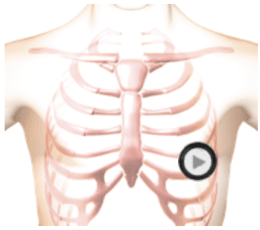Opening Snap and Second Heart Sound 105 Auscultation Practice
Opening Snap and Second Heart Sound 105
Research studies have demonstrated that listening to a heart sound for 2-3 minutes can help students master auscultation.
For textual descriptions, waveforms and heart animations, please use our courses on this website.


Listening Tips
S1:Systole:
S2:
Diastole: Snap early in diastole, higher-pitch than S2